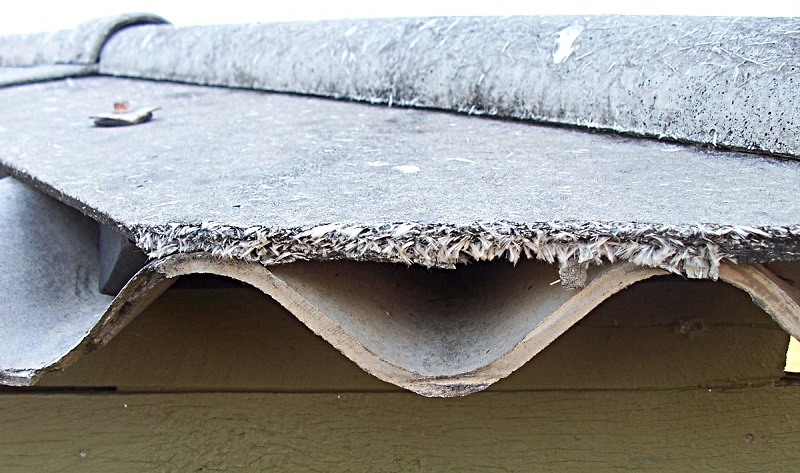Five signs you are at risk of asbestos poisoning at work
With Health and Safety Executive (HSE) statistics highlighting that Britain’s death toll from asbestos is at ‘crisis level’ [1], it’s now more important than ever to recognise the risks of asbestos poisoning in the workplace.
There were 2,709 ‘deaths by industrial disease’ recorded by coroners in England and Wales in 2018, a 44% rise on the 1,878 recorded in 1995, the earliest available figure [1].
Whilst efforts have been made to remove asbestos, the material that was previously used as insulation in many old buildings, the effects of poisoning can take a long time to develop, and can include everything from fibrotic lung disease such as asbestosis through to lung cancer.
Neil McKinley specialises in industrial disease cases including asbestos related conditions, he said:
“According to the World Health Organisation (WHO) no amount of asbestos exposure is safe and even the smallest amount can prove detrimental to health.
“Asbestos is defined as a group of minerals made of microscopic fibres which can be dangerous when dealt with inappropriately. Workplace risk assessments need to be completed to avoid employees having contact with toxic asbestos fibres, as inhaling asbestos dust can cause a number of severe lung conditions, which in extreme cases, can further develop into cancer.
“Therefore, those working within an industry where exposure has been or is still possible, extreme precaution is vital.”
Here are the five signs that you are at risk of asbestos poisoning at work:
- Nature of occupation: Certain occupations mean employees are more likely to be exposed to toxic dust, due to the work environment and responsibilities within these job roles. Workers in construction, shipyards and factories are among those facing a higher possibility of being exposed to asbestos. Professions with no permanent place of work, such as electricians, firefighters and auto mechanics, are also likely to find themselves at risk as they work in so many different environments.
- Age of the building: The peak period for asbestos installation was before 1970, with asbestos being fully banned in 1999. If you have been working in a building built before this time, it may be worth getting a check-up and calling for the environment to be checked for asbestos if it hasn’t been already. Those who have worked in the building and construction industries, particularly in the 1970s to late 90s, are at a higher risk of having encountered asbestos. Some job roles require employees to visit various sites that may be putting them at risk and although asbestos is no longer being used in buildings, it can still remain in older buildings so it’s best to be vigilant.
- Working with asbestos-containing materials: Asbestos is dangerous even in the smallest amounts – if material containing the asbestos fibres is chipped, drilled or broken, it can release a fine dust. In case of having to work with such materials, it is essential to have been made aware of this fact to ensure you take care in not touching or breaking the asbestos. In addition, taking showers before returning home is essential to avoid endangering family members.
- Inadequate protection by employers: Your employer has a duty of care in protecting you against harmful substances and ensuring your safety in the workplace. It is essential that all employees have been provided not only with safety equipment but also thorough instructions, information and training. If none of these have been addressed, it puts you at a higher risk of asbestos-related illness, especially when occupations involve working closely with asbestos.
- Working near contaminated job sites: Although you may not be working on a live asbestos site, you may be within close proximity of one. It is important that your employer outlines the risk of working near sites that may contain the toxic fibre in order to prevent yourself and those around you from asbestos poisoning. Asbestos remains in the air for hours, putting anyone nearby in danger of inhaling or ingesting it. It is therefore vital to be aware of your surrounding working environment.
This article originally appeared in Architectural Technology Journal (at) issue 132 published by CIAT in winter 2019. It was written by Neil McKinley, Personal Injury Solicitor at JMP Solicitors.
--CIAT
[edit] Related articles on Designing Buildings Wiki
Featured articles and news
RTPI leader to become new CIOB Chief Executive Officer
Dr Victoria Hills MRTPI, FICE to take over after Caroline Gumble’s departure.
Social and affordable housing, a long term plan for delivery
The “Delivering a Decade of Renewal for Social and Affordable Housing” strategy sets out future path.
A change to adoptive architecture
Effects of global weather warming on architectural detailing, material choice and human interaction.
The proposed publicly owned and backed subsidiary of Homes England, to facilitate new homes.
How big is the problem and what can we do to mitigate the effects?
Overheating guidance and tools for building designers
A number of cool guides to help with the heat.
The UK's Modern Industrial Strategy: A 10 year plan
Previous consultation criticism, current key elements and general support with some persisting reservations.
Building Safety Regulator reforms
New roles, new staff and a new fast track service pave the way for a single construction regulator.
Architectural Technologist CPDs and Communications
CIAT CPD… and how you can do it!
Cooling centres and cool spaces
Managing extreme heat in cities by directing the public to places for heat stress relief and water sources.
Winter gardens: A brief history and warm variations
Extending the season with glass in different forms and terms.
Restoring Great Yarmouth's Winter Gardens
Transforming one of the least sustainable constructions imaginable.
Construction Skills Mission Board launch sector drive
Newly formed government and industry collaboration set strategy for recruiting an additional 100,000 construction workers a year.
New Architects Code comes into effect in September 2025
ARB Architects Code of Conduct and Practice available with ongoing consultation regarding guidance.
Welsh Skills Body (Medr) launches ambitious plan
The new skills body brings together funding and regulation of tertiary education and research for the devolved nation.
Paul Gandy FCIOB announced as next CIOB President
Former Tilbury Douglas CEO takes helm.
UK Infrastructure: A 10 Year Strategy. In brief with reactions
With the National Infrastructure and Service Transformation Authority (NISTA).
























